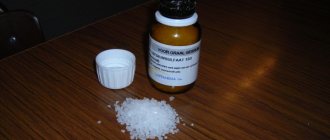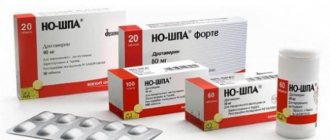Enemas are used for difficulties with defecation as a means of emergency symptomatic care. The procedure is suitable for patients of all age groups: from newborn babies to the elderly. Indicated for persistent difficulties with defecation, atonic disorders, preparation for labor, intoxication. Depending on the causes of constipation and accompanying symptoms, an enema solution is selected. The procedure is carried out before going to bed, the effect appears after 11-13 hours.
Types of enemas
An enema is a therapeutic measure based on the introduction of liquid (water, medicinal solutions) into the rectum or colon through the anus, using special devices, in order to cleanse the intestines of stagnant feces. Carrying out an enema at home will help get rid of constipation and prepare the intestines for examinations.
Types of enemas are determined by the volume of solution and the purpose of the procedure at home.
Cleansing enema
It is characterized by the introduction of a significant amount of liquid into the intestines (up to 1.5-2 liters), aimed at washing out feces from the body during constipation, and for cleansing before instrumental diagnostics.
The fastest, most effective and at the same time aggressive way to cleanse the rectum and colon, the abuse of which can develop dysbacteriosis.
The effect of the enema occurs within 5-10 minutes. To carry out the event, you will need skills or a trusted person, special equipment - an Esmarch mug (for adults), a mini-enema (for children).
The composition of a cleansing enema for constipation - boiled or mineral water without gas - dilutes and removes feces from the body.
Medicinal enema (microenema)
To introduce medicinal solutions, suspensions, preparations, herbal decoctions into the intestines, use a bulb or syringe with a volume of 10 to 100 ml .
The procedure involves a therapeutic effect when held inside, followed by a laxative effect, no earlier than half an hour after the infusion. Prescribed for proctitis - an inflammatory condition of the mucous membrane of the rectum, sigmoid colon, as well as for the treatment of dysbacteriosis. But frequent use can have a negative effect, further disrupting the quantitative and qualitative composition of the microflora.
Complications
Unfortunately, even the correct implementation of an oil enema cannot prevent the development of complications after manipulation.
The main complications for the patient after the procedure include:
- burn of the intestinal mucosa (if the recommended temperature for the oil solution is not observed);
- trauma to the rectum during insertion of a gas tube;
- bloating, flatulence;
- abdominal discomfort, nausea, vomiting;
- disturbance of electrolyte metabolism;
- allergic reactions;
- development of addiction and the impossibility of normal emptying without prior procedure.
What solution should I use for the procedure?
Before thinking about what to make an enema solution from, you need to determine the purpose of the procedure and exclude possible adverse reactions, taking into account the age, degree of constipation, the presence of diseases and special conditions of the patient.
Some enema solutions are used only for cleansing procedures, several others exclusively for microenemas:
Oil enema - has an anti-inflammatory and wound-healing effect in case of hemorrhoids and colitis, due to the formed oil layer it carries out a gently sliding excretion of feces.
An oil enema is done with vegetable, castor, mineral vaseline oil, at the rate of 2-3 tablespoons per 100 ml. boiled water.
Olive and sea buckthorn oil have an antimicrobial, strengthening effect and relieve inflammation. To introduce an oil solution into the rectum, use a syringe or rubber bulb with a volume of up to 100 ml.
Does not irritate the mucous layer of the hollow organ, has a relaxing effect on the muscles and intestinal walls, the solution should not be cold, within the range of normal body temperature (36-37 ºС). Oil enemas are given at night, as the laxative effect begins after 7-9 hours.
Hypertensive enema - has a powerful laxative effect, is a good irritant for the intestines, stimulating its peristalsis, thereby clearing constipation 15-20 minutes after administration.
A hypertonic enema solution is made with salt:
- cookery;
- English;
- Carlsbad or magnesia.
With increased arterial and intracranial pressure, edema, the salt procedure is most suitable, due to osmotic activity it retains water in the intestines, increasing the volume of feces.
Concentrated saline solution is contraindicated for use on a child.
And in case of inflammation and infections, it is better not to use it, in order to avoid additional irritation of the mucous membrane and aggravation of pain.
An adult is given a hypertensive enema if other methods do not help.
You need to prepare a hypertonic solution at home as follows:
- 30% magnesia solution - 30 grams of powder per 100 ml. boiled water;
- 10% salt solution - 100 ml of water with the addition of two teaspoons of salt.
The temperature of the solution can range from 5 to 45ºС, the volume of infused liquid should not exceed 100 ml, a microenema is used.
Soap enema - a solution is made with soap, mainly baby soap, diluted with water until foamy. Relieves constipation due to its strong laxative effect. It is popular to use glycerin at home, alone or in combination with soap. The proportions of glycerin and water are 2 tsp / 200 ml.
A water enema is a simple and commonly used option that will help soften and remove feces without stimulating peristalsis. Aqueous solutions with chamomile, sage, mint - have a mild effect on the mucous walls of the intestines. The introduction of large amounts of water into the body is contraindicated in case of unclear abdominal pain, after surgery on the gastrointestinal tract; in this case, it is better to give preference to a hypertonic or oil enema.
Video:
Algorithm
The manipulation must be carried out with medical gloves. The procedure consists of the following steps:
- The gas outlet tube is inserted into the anus 10-15 centimeters. Due to the anatomical features, it should first be directed to the patient’s navel (3-4 cm), and then along the tailbone.
- Connect a bulb or syringe with the collected oil product to the tube, after releasing the air.
- Slowly inject the solution into the patient's rectum. Injecting the product under pressure (quickly) may cause discomfort to the patient.
- After administration of the drug, the bulb or syringe is disconnected, the gas outlet tube is clamped and removed from the intestine.
- The patient is recommended to remain in this position for another 15-20 minutes, and then take a comfortable position for sleep.
If all stages of the procedure are performed correctly, the patient should expect softened stools in the morning. It is better to perform an oil enema at night so that the oil remains in the intestine for 6-8 hours.
How to properly administer an enema and prepare for it?
Preparing for an enema involves:
- Preparation of the necessary solution, instruments, place for the procedure - ideally, if it is a bed, since after infusion of the liquid, the patient needs to wait a certain time in a horizontal position.
- Treat the tips of the syringe and Esmarch's mug with an antiseptic and lubricate it with baby cream.
- When infusing the solution, it is important to choose a comfortable position (on your side, knee-elbow position), the body should not be tense. The tips of the instruments are inserted into the anus no deeper than 5-10 cm. After infusing the liquid, you need to restrain the urge to go to the toilet and massage the abdomen.
- How long it takes for stool to appear depends on the solution infused: if it is a cleansing, hypertonic, soap enema - after 10-20 minutes, oil enema after 7-10 hours.
- When using an Esmarch mug, the flow of solution should be slow, unlike a syringe, when by squeezing the reservoir, pressure is created and the liquid flows faster.
- The temperature of solutions for atonic constipation ranges from +11 to +20 ºС, for spastic constipation from + 36 to + 38ºС.
Can this be done for children?
Hardening of feces, stool retention - these problems can arise not only in adults, but also in infants, toddlers and school-age children, and adolescents. Is it possible to give an enema to children who are constipated?
Babies can be given an oil enema, having previously agreed on the procedure and the dose of the injected oil substance with the pediatrician. There are no age-related contraindications - an oil enema can be given to children from birth, but only with constipation and when all other remedies have already been exhausted.
Contraindications and precautions
For children, especially under one year of age, the procedure is prescribed in extreme cases, when laxatives, suppositories are ineffective, and only after consultation with a doctor.
For adults, the rules are less strict, but regular enema is contraindicated in order to prevent the occurrence of dysbacteriosis and atrophy of the intestinal muscles. Often you can only give an oil enema and only under the supervision of a doctor and as prescribed.
The laxative procedure is contraindicated for the following gastrointestinal diseases:
- Peptic ulcer;
- Malignant tumors;
- Erosion;
- Bleeding;
- Acute diseases – peritonitis, appendicitis;
- Postoperative, postpartum conditions;
- Aggravated inflammation of the rectum - colitis, proctitis;
- Heart failure.
Peculiarities
We draw your attention to the fact that an enema with vegetable oil is an auxiliary method in the treatment of constipation and does not eliminate the cause of stool retention. It is recommended to carry out this procedure no more than once a week.
Oil enema is also often used in children. However, to carry it out, it is necessary to use a pear appropriate to the child’s age. In this case, the proportion of the solution for manipulation should be greater than for adults to reduce the risk of complications.
Bowel problems are common during pregnancy and using an oil enema may also help. However, the procedure should be performed on pregnant women only in a medical facility and after permission from a doctor. If any complications occur, stop the manipulation immediately.
Oil enema can be used in women in the postpartum period, especially those who have had a cesarean section. This procedure helps patients have a bowel movement without additional strain on the abdominal wall muscles.
What can you do before the enema?
For constipation, you can use glycerin suppositories.
If constipation in children does not cause significant discomfort and there is no need to take urgent measures to eliminate it, you can try to do without an enema.
For example, constipation due to dysbiosis can be gently eliminated with prebiotics and probiotics carefully selected by a doctor.
The restored intestinal microflora normalizes the process of defecation without the use of an enema. If the cause of constipation is in the baby’s incorrectly composed diet, you need to stimulate bowel movements by introducing additional vegetables, fruits and juices.
Excellent results are achieved by normalizing the drinking regime or using Lactulose, a prebiotic with a laxative effect. Careful selection of formulas for artificial feeding and review of the diet of the nursing mother helps relieve constipation in infants.
If such measures are ineffective, the pediatrician may recommend special suppositories. Glycerin suppositories are suitable as first aid. If you cannot purchase children's candles, you can use candles for adults, divided into four parts.
Typically, the effect of this treatment for constipation occurs after a quarter of an hour. Microlax microenemas are no less effective. Their active ingredient occupies a small volume, which is especially convenient for their use in infants.
Microclysters
Microenema involves the introduction of a small amount of medicinal solution. The active components quickly soften stool and cause bowel movements. A small volume does not affect the effectiveness of the procedure, since the solution contains a high concentration of active ingredients. For constipation, softening, laxative and cleansing microenemas are usually used.
In pharmacies, microenemas are sold in small plastic tubes with a long tip. Let's consider the rules of use step by step:
- open the tube;
- squeeze out a small drop of solution and lubricate the tip with it;
- lie on your side or squat down;
- insert the tip into the rectum;
- squeeze out the contents with sharp pressure;
- Without releasing your fingers from the tube, remove the tip from the intestine. The urge to defecate will begin within a few minutes.
Microclysters act at the local level. The active substances do not cause disruption in the functioning of internal organs, since they are not absorbed into the systemic bloodstream. Microlax is considered one of the most effective microenemas in the category. It is even prescribed to infants and pregnant women. The effect is observed after ten to thirty minutes.
Microlax contains sodium citrate, sorbitol and sodium lauryl sulfoacetate. These active components increase the flow of fluid and help liquefy hard stool. Sometimes the product may cause a slight burning sensation, but it goes away quickly. The only contraindication to the use of Microlax is an allergic reaction to the active substances.
Normacol is another effective remedy. It contains a hypertonic solution. Normacol enhances peristalsis and accelerates the evacuation of feces. The laxative effect occurs after twenty to thirty minutes. When treating children under three years of age, the product is not allowed to be used.
Norgalase contains docusate sodium. The gel softens stool and promotes its excretion. The effect begins within five to ten minutes after the procedure. Norgalaz is not prescribed for the treatment of children under fifteen years of age.
Several recipes for performing a laxative enema
The effect can be enhanced with solutions created to instantly resolve the problem of stool retention. An oil enema is recommended. There are a lot of cooking options. Depends on the ingredient chosen as a base.
- Olive oil: 80 ml of olive oil per half liter of warm water. Administer 150-200 ml once.
- As a base - linseed oil: slightly warmed 150 ml are diluted with 500 ml of cool water. The dosage is the same.
- Castor oil base: 20 ml castor oil per 800 ml warm water.
Liquid for oral administration must be prepared before the procedure itself. This way, all nutrients and beneficial substances are preserved, and you will be able to get the best results. Do exactly according to the recipe. Oily oil eliminates ailments without harming the body. In addition to the laxative effect, there is an additional effect on the intestines: anti-inflammatory, lubricating, healing, soothing effects.
Natural remedies are also used to create a solution:
- Beetroot: Boil 20 grams of beets for half an hour. 400 ml of water is poured. Inject the liquid cooled to 25 degrees with a medium-sized pear.
- Honey: dilute 10 g of liquid honey with a tenth of warm water.
- Herbal: make a mixture of calendula, chamomile, celandine, 1 teaspoon each, pour half a liter of boiling water, let it brew for 20-30 minutes. Dilute to the required volume with boiled water.
A laxative enema during constipation helps normalize stools within a short period of time. You should not resort to enemas often. It is necessary to find out the cause leading to intestinal dysfunction, undergo the necessary tests and direct forces and resources to eliminate the source of the disease.
How to choose an enema product for constipation
First, it is recommended to understand the drugs used in the preparation of the solution administered orally. There are a number of types, divided according to their mode of action. Each has its own characteristics and method of action.
When carrying out colon cleansing, different volumes are used for the procedure: the maximum is half a liter, the minimum is a tenth of a liter, the average is between 100 and 500 ml. High-volume enemas work faster, applying high-intensity pressure to the intestinal wall. With strong stimulation, immediate emptying occurs.
Advantages and disadvantages
An enema relieves the feeling of heaviness and pain in the abdomen, constipation, and increased acidity. Cleansing the intestines from the inside also has a beneficial effect on a person’s appearance. The skin becomes fresh and clean, acne and yellowness go away, bad breath disappears, appetite and mood improve. It also cleanses the blood, relieves headaches and normalizes blood pressure. Some patients even note increased joint mobility after an enema. Elimination of discomfort caused by deteriorated functioning of the gastrointestinal tract has a positive effect on a person’s emotional and psychological state. Another advantage of an enema is that it is easy to use and inexpensive.
However, along with those who, out of necessity, skillfully practice cleansing the intestines with an enema, you can meet many opponents of this simple method. Perhaps they have never tried to give themselves or loved ones an enema or did it incorrectly. But we can agree with them in the following statements about the disadvantages of enemas:
- intestinal hypotension. If you use an enema too often, then from exposure to a large volume of water, the walls of the colon stretch and gradually stop contracting, the problem of constipation is further aggravated;
- risk of developing dysbacteriosis;
- disruption of the natural acid-base balance of the intestine.
What you need to know to relieve constipation at home
The rules for setting up an enema are described. It is worth taking them into account when performing a liberating intestinal lavage.
- A laxative enema is not considered a treatment. It is placed to relieve constipation, free the large intestine from feces, activating peristalsis. It does not directly affect the source of constipation. It is important to establish the cause of the disease before starting treatment in order to act directly on it. It is worth visiting a doctor, undergoing the necessary examination, and taking tests. Armed with the results obtained, you can count on an effective result.
- It is worth considering: all drugs related to laxatives are addictive. The intestines begin to get lazy. Especially when the products are used without interruption for 10 days. Natural atony of the intestinal muscles occurs. Enemas are also addictive. It's better not to allow this!
- The variety of laxatives on pharmaceutical markets leaves a person with a difficult choice: what to buy. Medicines have different effects on the body. It is worth purchasing a product with minimal side effects. The doctor will help you make your choice. Microlax is recognized as an excellent remedy. Even a recently born child can take it. The mentioned drug is absolutely safe.
- There are cases when administering a laxative enema or other laxatives is not recommended: there is pain in the abdominal area, and unknown discharge from the rectum. This is a serious reason to get examined.











